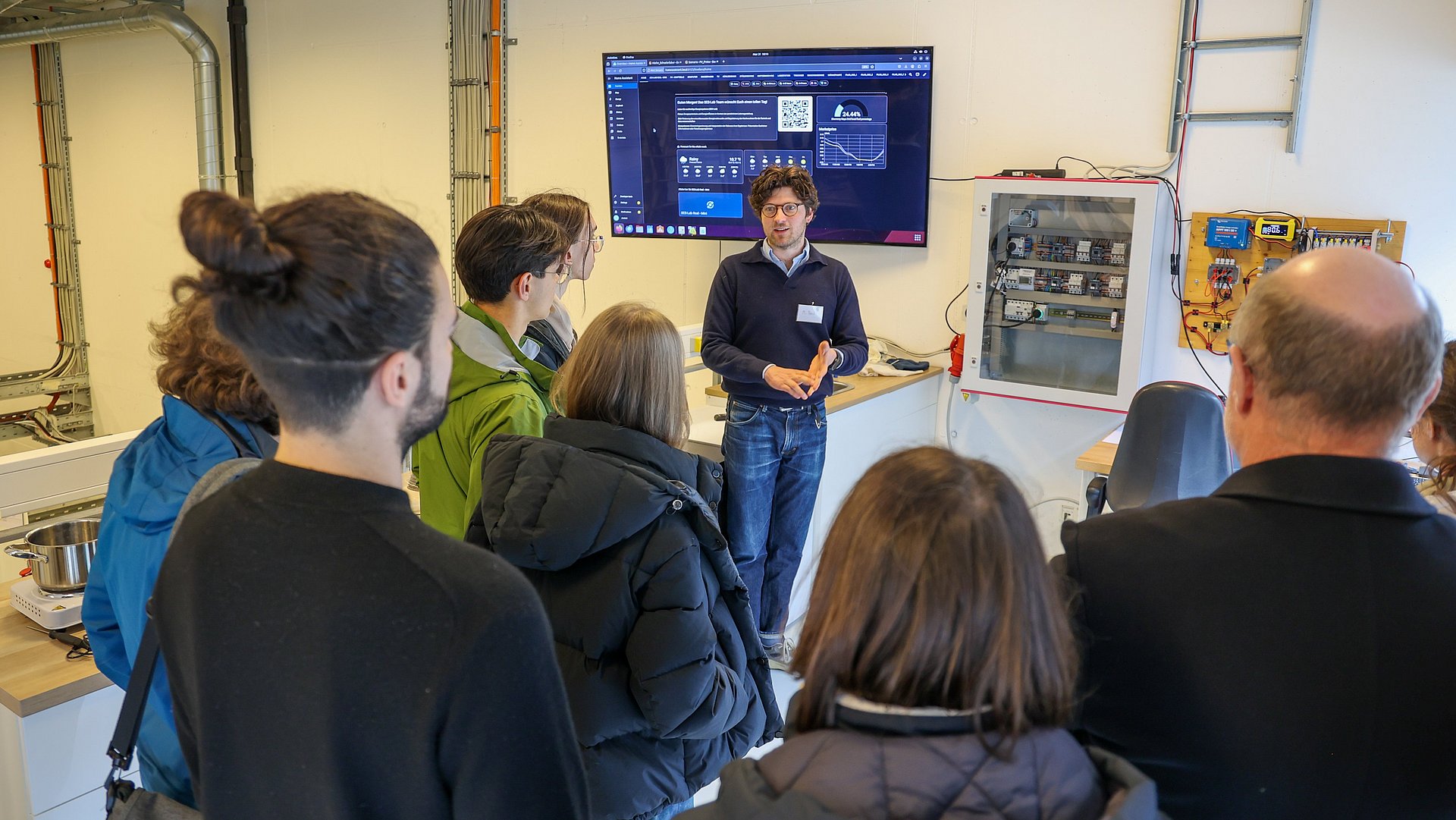Energy laboratory for school classes
Renewable energies and technology you can touch

"The global community faces a common challenge: to create a sustainable world." This is how Prof. Thomas Hamacher introduces the opening of the household laboratory for sustainable energy systems. In the lab, schoolchildren can experience renewable energy, energy efficiency and energy saving up close using household appliances. "We want to get children and young people excited about technology and raise their awareness of the energy transition. Because we need it for a sustainable world."
Practical and relevant to everyday life
How do I boil my pasta water with the lowest energy consumption? Which appliances are the biggest energy consumers in my home? And what is actually in an electrical box? Pupils can experience the answers to these and many other questions for themselves in the laboratory. A normal household is simulated here, with real appliances from lamps to washing machines. Unlike at home, however, a graph pops up on a monitor when the appliances are switched on; the electrical power and therefore the energy consumption are measured continuously and in real time. For example, you can quickly see how much energy a 30, 60 or 90 degree program of the washing machine consumes.
"It is then particularly interesting for the pupils to use this data from the various appliances to determine an individual energy profile for their entire household," says Stephan Baur about the lab's test runs. "Hardly anyone can explain exactly what a kilowatt-hour is, but the school groups are able to understand the energy costs in euros over the course of a year."
Renewable energies
However, the energy transition is not just about reducing consumption and increasing efficiency, but also about renewable energy supply. The laboratory's own photovoltaic modules on the outside wall generate energy to power the devices. The school groups can also observe this directly on the monitor and check whether the energy generated covers the consumption of the appliances.
The researchers have also developed mobile workshops as part of the project, in which pupils can examine small photovoltaic modules themselves, for example. Teachers can conduct the workshops with their classes in their own schools. The researchers provide them with teaching materials and accessories for the experiments. The pupils use the photovoltaic modules to light up lamps or turn motors with propellers - allowing them to experience energy systems at first hand.
- The project was funded by the German Federal Environmental Foundation (DBU).
- Thomas Hamacher is Professor of Renewable and Sustainable Energy Systems at TUM and is based at the TUM School of Engineering and Design.
- Contact for inquiries to the laboratory: Stephan Baur, stephan.baur@tum.de
Technical University of Munich
Corporate Communications Center
- Linda Schinnenburg
- presse@tum.de
- Teamwebsite
Contacts to this article:
Prof. Dr. Thomas Hamacher
Technical University of Munich
Chair of Renewable and Sustainable Energy Systems
Phone: +49 (89) 289 - 52741
thomas.hamacher@tum.de


